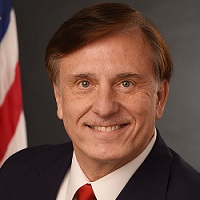 By John Flemming M.D. Deputy Assistant Secretary for Health Technology Reform
By John Flemming M.D. Deputy Assistant Secretary for Health Technology Reform
Twitter: @ONC_HealthIT
Last week was National Health IT Week, a nationwide celebration of the value of health information technology (health IT). I wanted to take some time to talk about one of my main areas of focus. Since I joined the Office of the National Coordinator for Health Information Technology (ONC), I have spent a lot of my time gaining insight about the challenges facing our healthcare system as it relates to health IT. One of those pain points in the healthcare system is the usability struggle that doctors face on a daily basis when it comes to their health IT products, like electronic health records (EHRs).
Earlier this year, ONC’s Chief Nursing Officer Rebecca Freeman discussed usability on our Buzz Blog. She defined usability as, “the extent to which a product can be used by specified users to achieve specified goals with effectiveness, efficiency and satisfaction in a specified context of use.” Many health IT products currently on the market do check some of those boxes when it comes to meeting usability requirements, but there are still some hurdles we need to overcome. Those hurdles we are striving to push through may include improving health IT system implementation in the care environment, ensuring staff receives better training and helping providers pick the best health IT system for their care center, to name a few.
Some of you may know me as a former Congressman from Louisiana, but I consider myself a family practice doctor first. What you probably don’t know though is that in the 1990’s I was one of the first people to fully implement EHRs in my practice. Since then, I’ve learned just how challenging to the doctor-patient relationship can be with a poorly designed EHR. Whether it is from excessive documentation requirements, or the struggles to even navigate within the EHR, I remember when I was with my patients, I was spending more time with my eyes on the computer screen than I was with my eyes on them.
This not only impacted my rapport with the patient, but it also fractured the trust bond created through face-to-face interaction. Building that relationship with a patient is absolutely paramount if your patients are going to trust you enough to volunteer often incredibly sensitive information. Doctors want to spend time with their patients and that isn’t possible if the patients think they are only getting half of their doctor’s attention while the doctor interacts with their health IT system.
A 2016 study by the American College of Physicians titled “Survey on Physician Use of EHR System – Ease of Use Baseline Data” found that 89-percent of respondents who indicated they were satisfied or very satisfied with their EHR also reported that their EHR was easy or very easy to use. On the surface those statistics look great to me, until I saw that 90-percent of respondents that were dissatisfied with the EHR, indicating thatit was difficult or very difficult to use. A separate study published in the Annals of Family Medicine found that one of the struggles with EHRs is simply time. The study found primary care physicians spend more than one-half of their workday, nearly six hours, interacting with the EHR during and after clinical hours.
Those numbers just aren’t acceptable.
Usability should be an easy thing for us to accomplish. The good news is that ONC is working with both industry stakeholders and our federal partners to make an environment cohesive to creating usable health IT products.
The 21st Century Cures Act directs HHS to establish a goal, develop a strategy and develop and provide recommendations with respect to the reduction of regulatory or administrative burdens related to the use of EHRs. ONC is working together with the Centers for Medicare and Medicaid Services, Congress, stakeholder groups, payers and private industry to determine the perfect recipe of usable health IT, sensible documentation and easy reporting requirements to improve the interactive experience with health IT.
No one is more aware of the importance of making sure health IT enhances the hectic lives of doctors across the country than I am. Burnout is a significant problem and the nation’s doctors are leaving the profession at an alarming rate. A few of the main culprits causing burnout include: productivity decreases, cost overruns and the time required to use health IT. These symptoms all cause doctors to retire early, move into other lines of work or leave private practice in favor of corporate operations that better protect cost and time.
As the deputy assistant secretary for health technology reform, I have made it one of my personal missions to improve the ease of use and usability of EHRs, and make it easier for the patient to get their information, but also for doctors to have a better working environment. Improving usability is just one goal in that mission, but as we move through National Health IT Week, I am reminded it may be the most important one. When my time is complete here at ONC, I hope doctors are able to look at their health information technology products and say “how did we practice without these?” Improving usability will be one step in getting us closer to that belief structure.
This post was originally published on the Health IT Buzz and is syndicated here with permission.
